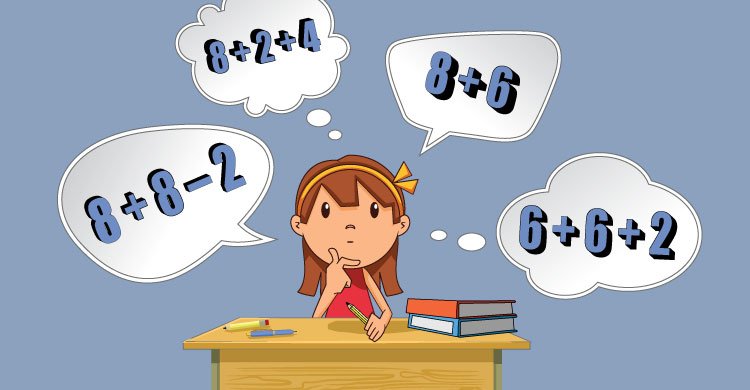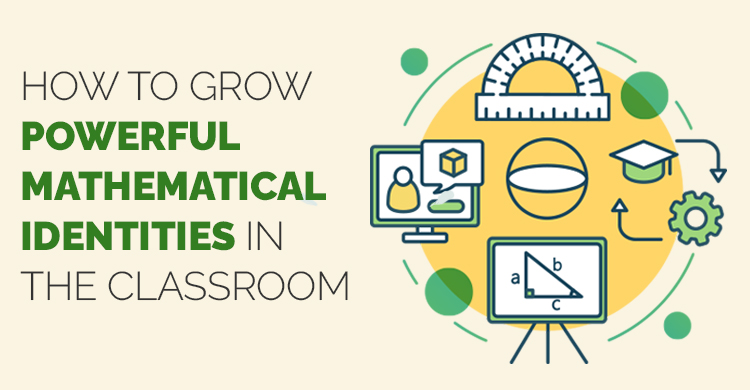Who are the students proficient in mathematics? What do they know? What are they able to do that sets their work apart from the others? When I ask K–5 teachers these questions, the following are some of the more frequent answers:
- They are students who can compose and decompose numbers.
- They flexibly think about numbers.
- They have number sense to estimate a solution and check its reasonableness.
- They apply a justifiable strategy when solving tasks.
- They choose strategies to use to solve problems.
- They understand how one concept is related to another.
- They have stamina to read and understand a word problem before trying to solve it.
- They can talk about mathematics.
Interestingly, never once has a teacher described a proficient or advanced student as one who can copy the steps for the day and do ten similar problems. Instead, the answers reflect students who have learned critical reasoning skills – those skills necessary to use mathematics to make sense of and quantify the world. Teachers describe mathematically proficient students who understand that an algorithm always will produce an answer, but is not always the most efficient or effective way to solve a problem or perform a calculation. These students have tools to make sense of the mathematics and can make connections between one problem and another.
Once the skills of proficient and advanced students are identified, the next question teachers ask is: How are these critical reasoning skills developed by teachers and learned by students?
The critical reasoning skills described by the teachers are reflected in the standards for mathematical practice or other state mathematics process standards. They are the habits of mind students need to learn while learning grade-level content. Collaborative teams and teacher need to focus on intentional teaching strategies to foster reasoning. The choice of task in each lesson and the intentional focus on one standard for mathematical practice will have the greatest impact on students’ learning to reason.
Some examples to build critical reasoning include the following:
- If building stamina for solving word problems, set a timer and have students read the question. Next, provide time for them to summarize the task and then start the question. Share “starts” with a partner and choose one to use to finish the solution together. Over time, grow the amount of time for independent and/or pair/group work. Encourage the use of sentence frames so students can communicate effectively with one another.
- Be intentional with how student solutions are shared with the class so students can determine different strategies they might use to complete a task. Ask how this task is related to another one they have seen earlier in the year or in the previous grade-level. You can also ask which strategies are easy, effective, and efficient to use.
- Give tasks that have too much information or not enough information to emphasize the need to make sense of the problem before beginning, or think about giving the answer and having students then show the work necessary to prove the answer. These are small tweaks to lesson planning that will grow student reasoning and learning.
- If you are building number sense, consider asking students to estimate an answer to a task before solving it. Talk with students about which answers make sense and then let students continue that thinking as they solve the task.
- For fluency with operations, pose a question and have students share how they think about the solution. For example, when asking second grade students to share how they think about finding 8 + 6, they answered the following: 8 + 8 – 2 (doubles), (8 – 1) + (6 + 1) = 7 + 7 (doubles), 6 + 6 + 2 (doubles), 8 + 2 + 4 (make a ten), and 8 + 1 + 1 + 1 + 1 + 1 + 1 (counting on). These are but a few ways students might add 8 and 6 and it is important students see there is more than one way to do a problem. They do not get to say “I am stuck.” They get to say, “I am stuck, so now I am going to try _____.” (fill in the blank with a strategy or model).
Mathematics is not just about the final answer. Mathematics is about the thinking and reasoning that can be replicated to solve increasingly sophisticated problems while developing logical reasoning and problem solving. Work with a colleague to determine how to best have students discuss their learning and productively struggle through a solution pathway. Consider the tasks to use with students so they must notice patterns, use tools, make connections to prior learning, and make sense of their world mathematically. Which tasks and activities best further student learning and reasoning and how will students generate meaning by using manipulatives and drawings?
Teaching students to critically reason is not easy, but is one of the most important skills students can learn in this day and age of access to calculators and other technologies. The ideas in this blog only scratch the surface for ways to develop students’ ability to reason mathematically and you can find more strategies in Engage in the Mathematical Practices. What you include in daily lessons to engage students in learning and grow their thinking matters. It is time to commit to each student critically reasoning and applying his or her learning. Where will you begin?
[author_bio id=”354″]






